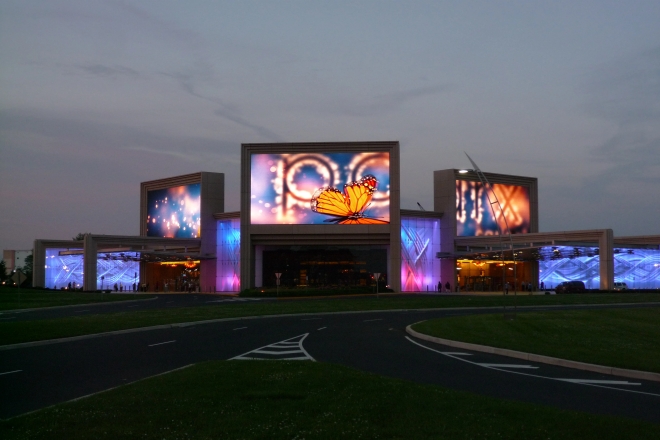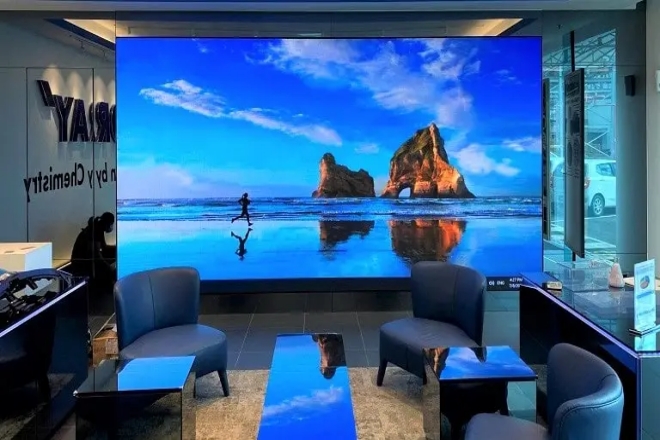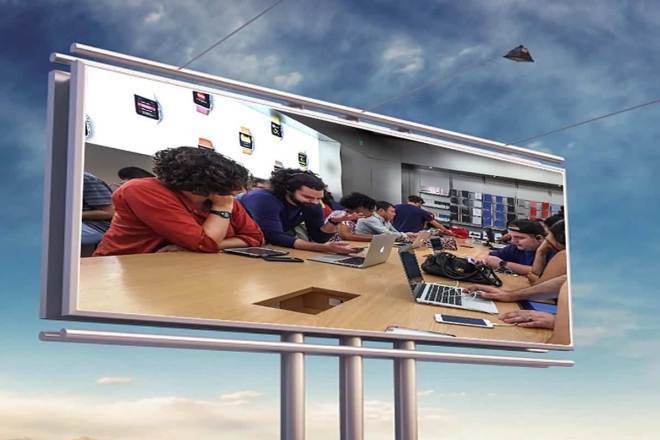Introduction

Have you ever stood in front of a dazzling array of Écrans d'affichage LED, hesitant and not knowing which size to choose to perfectly match your needs? Are you worried that the size is too large and causes a waste of resources or too small and affects the viewing experience?
In today’s pursuit of efficiency and perfection, choosing the right size of LED display screen is particularly important. So, how do you find that “golden ratio” in a short time to ensure that your investment is both economical and efficient?
This article will take you straight to the core and use three minutes to master a set of methods to quickly determine the size of LED display screens. From clarifying the usage scenarios to understanding technical parameters to the actual operation steps and precautions, we will reveal them to you one by one.
1. Clarify the usage scenarios and needs of LED display screens
Before choosing an LED display screen, we must first figure out where it will be used and what content it will display. In this way, we can choose the most suitable screen.
1). Usage environment:
Indoor or outdoor: Imagine that if you put a screen in a shopping mall, the environment is relatively stable, and the light is easy to control. But if it is placed in a square, you have to consider wind and rain and whether the sun during the day will make the screen unclear.
How far the audience is from the screen: If the screen is large, but the audience stands far away, it may not look clear enough. Therefore, we need to know how far the audience will stand to see the screen so that we can choose the right screen size.
Lighting conditions: If the screen is placed in a very bright place, such as outdoors or in a very bright room, the screen must be brighter so that the audience can see it clearly.
2). Exigences relatives au contenu :
What to show: Do you want to put text, pictures, videos, or live broadcasts? Different content has different screen requirements. For example, playing videos may require a brighter screen color and higher résolution.
Is the picture quality requirement high? If you want the content on the screen to look very clear, like a movie, you need to choose a high-definition or even ultra-high-definition screen. If it is just simple text or pictures, the requirements are not so high.
2. Understand the basic parameters of LED display screens

When we start to choose LED display screens, there are several key parameters that we cannot ignore. They are like the “identity card” of the display screen, telling us the performance and characteristics of this screen.
1). Resolution and pas de pixel: the secret of clarity
Resolution, in simple terms, is the number of pixels on the screen. It determines the clarity of the picture. The pixel pitch is the distance between two adjacent pixels. The smaller the distance, the more delicate the picture looks and the richer the details are.
Therefore, when choosing, we should choose the appropriate resolution and pixel pitch according to the viewing distance. If the distance is too close and the resolution is not high enough, “pixelation” may occur, and the picture will look like it is made up of small squares.
2). Luminosité and contrast: the display of color and level
Brightness, expressed in cd/m², determines the visibility of the screen under strong light. If you use it outdoors, you must choose a high-brightness screen so that you can see it clearly during the day. Contrast affects the layering of colors and the three-dimensional sense of the picture. The screen with high contrast has a more natural color transition and a deeper picture.
3). Size and ratio: the best is the right one
Screen size is usually expressed as “length × width.” When choosing, in addition to considering the size of the actual installation space, you must also choose according to the application scenario and content layout.
Common screen ratios include 16:9 and 4:3, etc. They have their own characteristics and are suitable for different usage scenarios. For example, the 16:9 ratio is more suitable for watching videos because it is closer to the aspect ratio of movie screens, while 4:3 is more suitable for displaying documents or pictures.
At the same time, we must also consider the viewing comfort of the audience to avoid visual fatigue caused by screens that are too large or too small.
3. Quick calculation and selection of LED display screens
Now that we have enough knowledge about LED display screens, it is time to pick the most suitable one. Don’t worry; here are a few simple and practical steps to help you make a quick and accurate choice.
1). Estimation based on distance de visualisation
Imagine where the audience is standing to watch your screen. You can use some simple empirical formulas or online tools.
Just enter the viewing distance, and the viewing angle you want (for example, you want the audience to be able to see the screen clearly from any angle), and the tool will automatically help you estimate a suitable screen size range. In this way, you can further select within this range.
2). Cost-effectiveness analysis
When buying things, of course, you have to consider the cost-effectiveness. When choosing an LED display screen, you should not only look at the screen size but also consider the impact of factors such as resolution, brightness, and color on the price.
You can list several alternatives, compare their performance and price, and choose the one with the best cost-effectiveness.
At the same time, you should also consider possible changes in demand in the future, such as whether you need to reserve some upgrade space so that you can replace higher-performance components in the future.
3). On-site measurement and simulation
If conditions permit, it is best to measure the size and shape of the installation space on site so that you can know more accurately which screen sizes are suitable. In addition, there are many virtual software that can help you simulate the installation effects of screens of different sizes.
You can try to use this software to preview the actual effects of screens of different sizes in your application scenarios so that you can more intuitively feel which size is most suitable for your needs.
4. Points worth noting

In the process of selecting LED display screens, in addition to the key points mentioned above, there are some things worth noting. These small details may affect your subsequent use experience and maintenance costs, so they should not be ignored.
1). Installation environment
Load-bearing capacity:
Before installing the LED display screen, make sure that the load-bearing capacity of the installation location is sufficient. Large screens are often not light in weight. If the installation location is not load-bearing enough, it may cause safety hazards.
Ventilation et dissipation thermique :
LED display screens will generate a certain amount of heat when working, so ventilation and heat dissipation conditions are very important. If the installation environment is closed or poorly ventilated, the screen may overheat and affect its service life.
Étanche à l'eau et à la poussière :
For LED displays in outdoor or special environments, waterproof and dustproof capabilities are also essential. Choosing products with corresponding grades can ensure that the screen can still operate stably in bad weather or dusty environments.
2). After-sales service
The maintenance and use cycle of LED displays is long, so after-sales service is particularly important. Choosing a supplier with a good after-sales service system can get timely help when encountering problems, reduce maintenance costs, and ensure worry-free use.
Conclusion
Choosing the right size for an LED display is not a simple matter. It requires us to comprehensively consider multiple factors such as usage scenarios, content requirements, technical parameters, and cost-effectiveness.
Through the introduction of this article, we hope to provide readers with a clear idea and practical methods to help everyone choose the LED display that suits them more accurately.
Enfin, si vous souhaitez en savoir plus sur les écrans LED, veuillez nous contacter.
